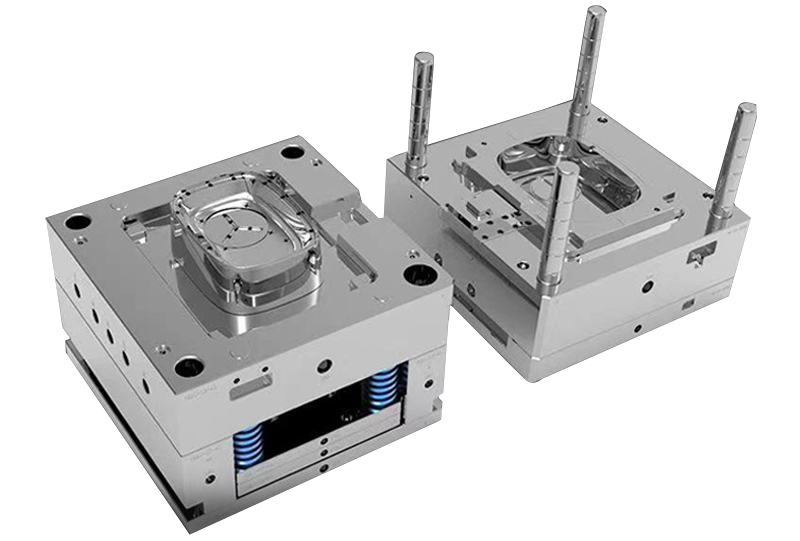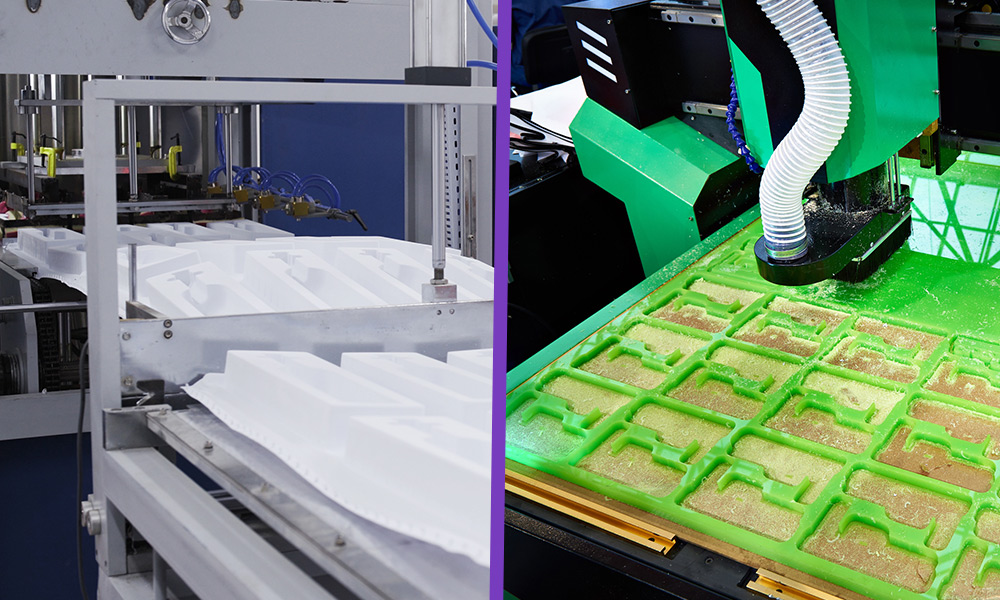Checking out the Future of Plastic Injection Molding in the Manufacturing Market
Checking out the Future of Plastic Injection Molding in the Manufacturing Market
Blog Article
Understanding the Basics of Plastic Injection Molding Procedures
Plastic shot molding works as a keystone of modern production, supplying a systematic approach to producing complicated elements with precision. This process not just encompasses the essential actions of melting and infusing materials into mold and mildews however likewise involves a nuanced understanding of various influencing aspects, such as temperature and pressure. As markets progressively require efficiency and high quality, the details of this methodology end up being more essential. Checking out these essential aspects might expose exactly how even small adjustments can lead to significant enhancements in manufacturing results, questioning regarding the possibility for advancement in this well established process.
What Is Plastic Injection Molding?
Plastic shot molding is a widely used production process that changes thermosetting and thermoplastic materials right into accurate and intricate shapes. This strategy is favored for its ability to create high quantities of identical components with exceptional precision, making it an essential technique in different industries, including auto, durable goods, and medical tools.
The process entails melting the picked plastic product and infusing it right into a mold under high stress. The mold, made to the requirements of the desired component, enables the molten plastic to materialize as it cools and solidifies. As soon as the material has solidified, the mold and mildew is opened, and the finished component is ejected.
Plastic injection molding uses numerous advantages, consisting of minimized waste, uniformity in manufacturing, and the ability to incorporate complex styles that might be challenging with various other making techniques. In addition, it sustains a wide series of products, each giving unique properties that can be tailored for details applications. As industries continue to introduce, plastic shot molding stays at the center, making it possible for the growth of innovative items that meet evolving customer needs.
The Injection Molding Process
The injection molding procedure is an innovative technique that includes a number of crucial stages to create premium plastic elements. Initially, plastic pellets are fed right into a heated barrel where they are melted into a thick fluid. This molten plastic is then infused under high stress right into a precision-engineered mold and mildew, which shapes the product right into the wanted type.
Once the mold and mildew is loaded, the plastic is permitted to solidify and cool down, taking the shape of the mold and mildew dental caries. Air conditioning time is essential, as it affects the cycle time and the final residential properties of the shaped component. After enough cooling, the mold and mildew opens up, and the completed element is ejected using ejector pins.

Materials Used in Shot Molding
Different products can be utilized in the injection molding procedure, each offering distinct properties that accommodate certain applications. The most generally utilized products consist of thermoplastics, thermosetting plastics, and elastomers.

Thermosetting plastics, like epoxy and phenolic resins, undertake a chemical change throughout the treating process, leading to an inflexible, inflexible structure. These products are perfect for applications calling for high heat resistance and architectural integrity, usually made use of in electrical insulators and auto parts.
Elastomers, consisting of silicone and rubber-based materials, give versatility and resilience. Their one-of-a-kind homes make them suitable for applications that demand elasticity, such as gaskets and seals.
Additionally, specialized products like bio-based plastics and composites are getting grip for their ecological advantages and improved efficiency features, broadening the extent of injection molding applications in different sectors. Recognizing the homes of these materials is crucial for choosing the suitable kind for particular tasks.
Advantages of Shot Molding
Shot molding attracts attention as an extremely efficient manufacturing procedure that provides various benefits for creating intricate components with accuracy. One of one of the most significant advantages is the capability to create elaborate layouts that would be tough or difficult to attain with various other approaches (Plastic Injection Molding). The process enables in-depth features and limited resistances, ensuring premium elements
In addition, shot molding is understood for its rapid production capabilities, making it a suitable option for high-volume manufacturing. Once the mold and mildew is try here produced, parts can be generated promptly, lowering lead times and increasing overall productivity. This performance not only decreases manufacturing prices however also gives an affordable side in the marketplace.
The adaptability of materials used in injection molding additionally enhances its charm. A variety of thermoplastics and thermosetting polymers can be used, allowing makers to pick materials that ideal satisfy their details requirements, including warmth, versatility, and toughness resistance.
Moreover, Look At This the process minimizes waste, as excess product can often be recycled and reused. This sustainability aspect adds to a decreased ecological influence, making shot molding an accountable production choice. In general, the benefits of injection molding make it a preferred technique for lots of markets.
Variables Influencing Product Top Quality
While numerous elements can influence item quality in shot molding, recognizing these components is important for achieving optimal results. Key aspects consist of material selection, processing parameters, and mold and mildew design.
Material selection plays an important function, as various polymers show one-of-a-kind residential or commercial properties that influence flowability, strength, and thermal stability. Inadequate product selection can lead to problems such as warping or incomplete dental filling.
Handling parameters, consisting of pressure, temperature, and cycle time, must be meticulously controlled. Variations in these setups can cause inconsistencies partially measurements and surface finish. For example, exceedingly high temperature levels might trigger deterioration of the polymer, while poor stress can lead to short shots.
Mold and mildew style is equally vital, as it identifies the flow of the molten plastic and the cooling procedure. Improperly developed mold and mildews may lead to irregular cooling rates, leading to residual stresses and dimensional errors.

Conclusion
In conclusion, plastic injection molding serves as a critical manufacturing process that enables the efficient manufacturing of top quality parts. Proficiency of the shot molding procedure, consisting of the understanding of materials and the impact of numerous variables on item top quality, is crucial for achieving ideal results. The advantages of this approach, such as cost-effectiveness and style adaptability, more highlight its importance across numerous sectors, strengthening its status as a preferred option for high-volume production.
Plastic injection molding offers as a foundation of modern manufacturing, providing a systematic technique to producing intricate parts with precision.Plastic injection molding uses numerous benefits, including reduced waste, uniformity in production, and the ability to integrate intricate styles that may be testing with various other producing approaches (Plastic Injection Molding). As markets proceed to innovate, plastic injection molding stays at the forefront, allowing the advancement of innovative items that meet progressing consumer demands
The shot molding procedure is an advanced method that includes several crucial stages to create high-grade plastic elements.In conclusion, plastic injection molding offers as a critical manufacturing procedure that enables the effective manufacturing of get redirected here top quality elements.
Report this page